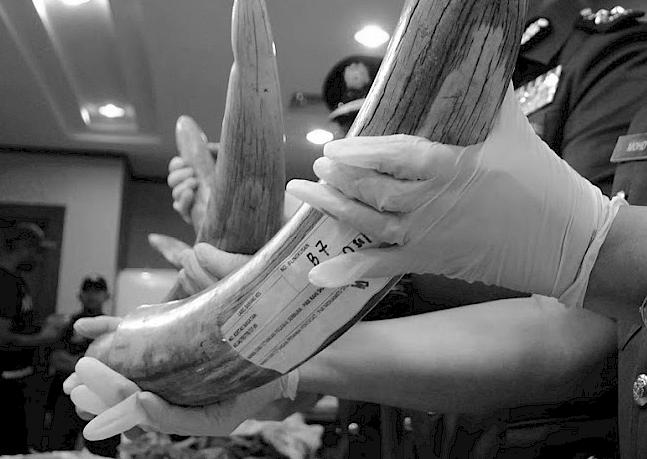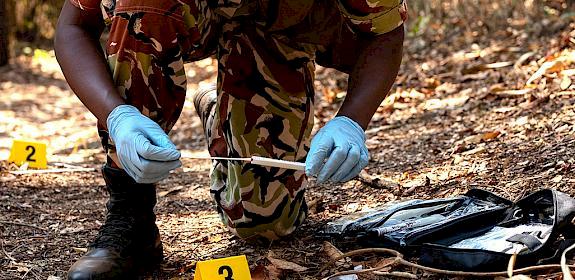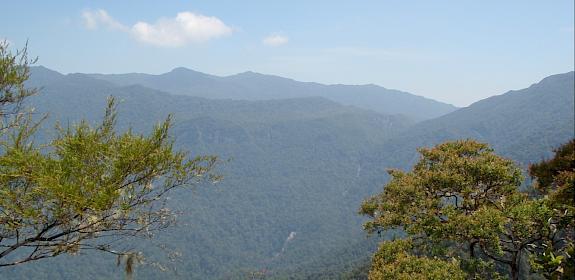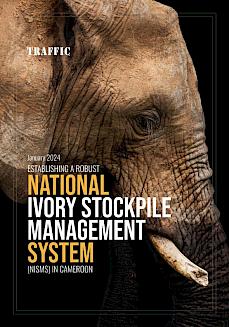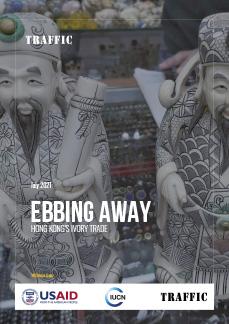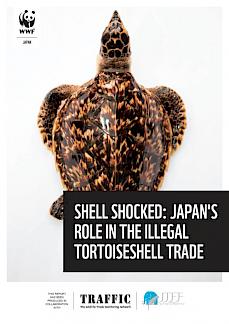
© naturepl.com / Andy Rouse / WWF
i
African Elephant conservation
African Elephants are one of the most heavily poached mammals in the world. Historic and ongoing demand for ivory is the leading reason behind their slaughter, with habitat destruction, fragmentation and rapid human development posing significant threats also.
The African Elephant Loxodonta africana occurs in 18 countries in sub-Saharan Africa, numbering an estimated 350,000 individuals across the continent. Although certain populations in Central Africa are deemed relatively secure, poaching between 2009–2016 saw a 30% reduction in population numbers. As illegal African ivory continues to flood into Asian markets, poaching still poses a severe threat to the survival of elephant populations across the continent.
90% of African Elephants
have been killed in the last 100 years
20%
of African Elephants have been lost in the last decade
approximately 55
African Elephants are poached on the continent every day
5 tonnes
of elephant tusks were seized in airports alone in 2016
415,000
individuals are estimated to remain in the wild today
identifying "at risk" ivory markets
The closure of domestic ivory markets identified as being contributors to elephant poaching or illegal trade has long been a major conservation objective of TRAFFIC’s work.
Our offices and staff have made invaluable contributions to facilitating the closure or planned closure of domestic ivory markets in Thailand, mainland China, Japan and Hong Kong—all of which were singled out by TRAFFIC’s research and analysis as key areas of concern.
However, market closures on their own will not stop poachers from killing elephants. A huge national and international commitment must be made by governments and enforcement agencies around the world to match the illicit innovation and determination of criminal syndicates.
We are fighting for elephants by training enforcement and Customs agencies on the ground, analysing trade trends and international ivory seizures and advising governments and private companies on strengthened policy to curtail poaching and illegal trade.
evolution of the ivory trade
The global landscape for ivory trade has shifted dramatically following increased international attention to the decimation of many African Elephants populations. Since the year 2000, primary domestic ivory markets in several Asian countries have closed, with European and North American countries following suit.
However, ongoing TRAFFIC investigations have revealed the displacement of such markets to neighbouring countries and territories, and even ivory processing, traditionally conducted in China, now occurring illegally in African nations to avoid detection in transit by enforcement agencies.
Ivory in China
China's domestic ivory ban came into force at the start of 2018; a move with the potential to significantly reduce ivory consumption in China and reverse devastating poaching in Africa.
The Chinese government successfully closed its ivory processing plants and ivory traders throughout the country, but questions still remain regarding its significant remaining ivory stockpiles and the displacement of illegal ivory trade to Hong Kong, Cambodia, Japan and Viet Nam.
The number of online monthly adverts observed between 2012–2016
i
Ivory in Hong Kong
Following mounting international pressure and consultation with TRAFFIC and other NGOs, Hong Kong's legislative panel voted in favour of phasing out their domestic ivory market by 2021.
Although a promising move for elephant conservation, displaced ivory trade from mainland China continues to occur within the territory as criminal syndicates attempt to offload their stockpiles ahead of the domestic ban. Despite calls for a shorter timeframe, the phase-out remains on track for 2021, raising concerns it may reduce the consumer impact and message from mainland China's market move to close their ivory market.
Imports of worked and raw ivory for commercial purposes into Hong Kong, 2005–2014
i
Ivory in Japan
Ivory has an deep-rooted significance within elements of Japanese culture. It remains one of the world’s largest domestic ivory markets, and is home to an active, though shrinking, ivory manufacturing industry.
A 2017 TRAFFIC report revealed a significant illegal ivory export market where organised criminal networks and covert ivory vendors offload raw and worked ivory, as well as tusks, to mainland Asian nations. TRAFFIC is calling for the urgent closure of Japan's ivory market pursuant to CITES Resolution 10.10.
Ivory in Thailand
Thailand was a prominent ivory market for years, serving as both a major consumer and transit hub for illegal trade.
The 13th CITES CoP in 2013 initiated a National Ivory Action Plan (NIAP) process; at the time Thailand was believed to be the largest unregulated ivory market in the world. Since then, and following passing the Elephant Ivory Act criminalising the sale of elephant ivory, TRAFFIC surveys have found a dramatic downturn in the amount of ivory openly for sale. While this is a positive move for African Elephants, continued law enforcement efforts are crucial to avoid a resurgence of illicit activity.
Ivory bangles and pendants worn in Thailand © WWF / James Morgan
i
Ivory in Southeast Asia
Other Southeast Asian countries including Viet Nam, Cambodia, Malaysia, and Laos have all been flagged as hubs of illegal ivory trade.
In 2016, five major seizures of ivory in Viet Nam flagged the nations significant role as a transit point with global illegal trade flows. Our subsequent monitoring and market surveys found illegal ivory as the most regular illegal wildlife commodity for sale online. Malaysia is consistently used by traffickers as a transit hub for illegal ivory shipments inbound to Asia from Africa, with Customs authorities continuing to make regular seizures of ivory alongside other illegal wildlife products.
Malaysian Customs reveal a seized shipment of elephant tusks © TRAFFIC
i
related reports to ELEPHANTS
Explore the latest publications, reports and papers from TRAFFIC related to elephant conservation and trade in ivory.
Visit our resource library for the full TRAFFIC publication archive.
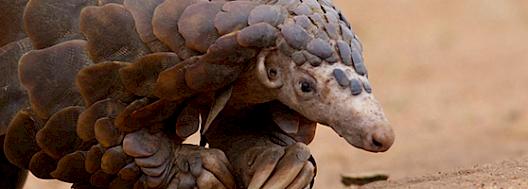
Wildlife TRAPS
Our USAID-funded Wildlife, Trafficking, Response, Assessment, and Priority Setting (Wildlife TRAPS) helps protect African Elephants through the provision of training, tools and forensics support to enforcement agencies, trade monitoring and analysis, and policy advice to governments.
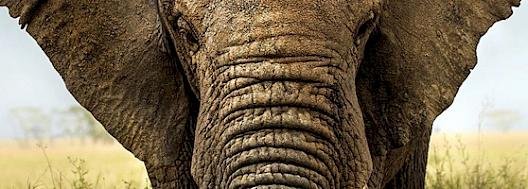
ETIS
The Elephant Trade Information System is a TRAFFIC-managed database of elephant-related seizures and enforcement actions. It was mandated by CITES in 2002 and is still used to analyse illegal trade trends and identify countries/territories of particular concern.

